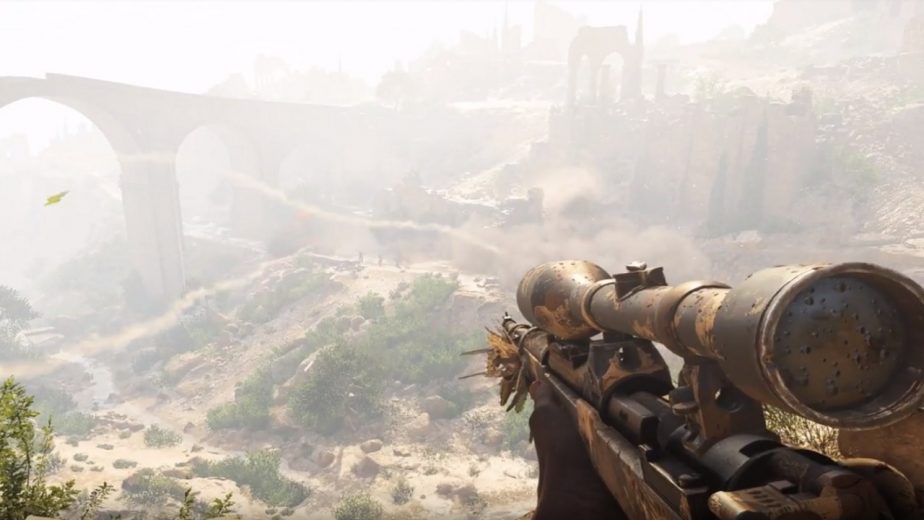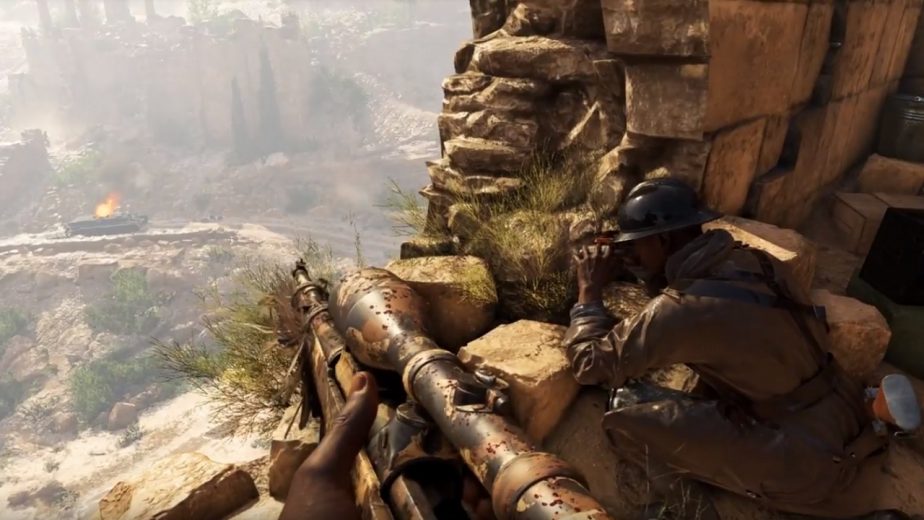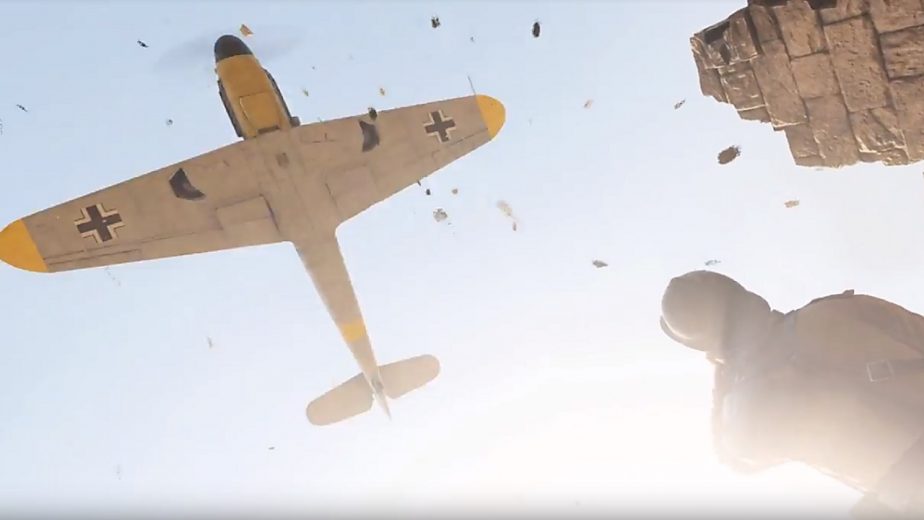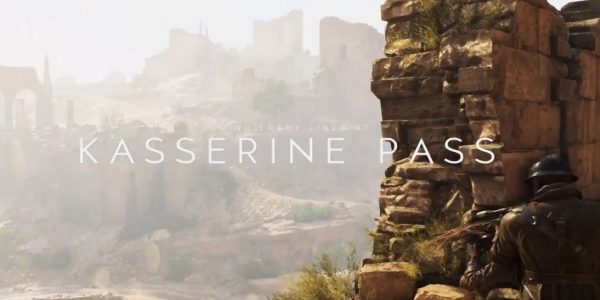The first thing which any Battlefield player experiences in Battlefield 5 is the game’s opening prologue. This short mission mirrors that of Battlefield 1, hurling players from battle to battle all across the Second World War. During the Battlefield 5 Prologue, players take on the roles of both Allied and Axis soldiers in famous battles, including the Battles of Narvik and the Siege of Tobruk. One of these brief vignettes casts the player as a sniper at the Battle of Kasserine Pass, firing down on German troops from hilltop ruins. Although only a small snapshot of this battle features in the game, the Battle of Kasserine Pass was actually the first major battle in Africa to involve the United States. Unfortunately, it didn’t exactly go well for the new arrivals.
The Battlefield 5 Prologue: Behind Enemy Lines at Kasserine Pass
The vignette which players experience in the Battlefield 5 Prologue only spans a couple of minutes. Like the Siege of Tobruk scene, the mission presents a snapshot of a much larger battle. In this case, the “Behind Enemy Lines at Kasserine Pass,” section puts the player in control of a sniper. The soldier and his fellows are presumably members of the Free French Army, which took part in the battle. Indeed, their uniforms bear a strong resemblance to those of the Senegalese Tirailleurs who appear in the Tirailleur War Story, suggesting that they are French colonial troops from either Algeria or French Morocco.

The player joins an ambush on a German convoy which is passing through an Algerian valley. Although the Battle of Kasserine Pass mostly took place in neighbouring Tunisia, the fighting passed across the border on several occasions. This particular scene seems to depict soldiers sent behind the Axis lines to disrupt reinforcements or supplies. After defeating the convoy, German soldiers rush into the valley, while planes bomb and destroy a nearby bridge. The same planes then return to open fire at the player’s position, ending the scene.
Buildup to Kasserine: The Run for Tunis and Battle of Sidi Bou Zid
The real-life Battle of Kasserine Pass took place in February of 1943, shortly after the United States entered the war. The battle was the first for the Americans in Africa. They, along with their British and French allies, were seeking to defeat Erwin Rommel’s fearsome Afrika Korps Assault Group. This heavily armoured army contained both German Panzer divisions and Italian tanks.
Several months prior to the battle, the Allied forces had landed in Algeria and French Morocco as part of Operation Torch, days after the Allied victory at the Second Battle of El Alamein. Reacting to this, Axis troops from Sicily moved to occupy Tunisia. During the “Run to Tunis,” both Allied and Axis forced raced to claim the region, and the Axis won by a slim margin. A few months of preparations later, the Allies crossed the Atlas Mountains and prepared to attack Rommel’s occupation force.

Prior to the Battle of Kasserine Pass, preliminary engagements had gone well for the Axis. The two opposing armies clashed first at Faïd Pass on the 30th of January. The Germans used Panzers to force the Allies back, before feigning a retreat and drawing them into a deadly trap; dozens of American tanks were torn to pieces by German anti-tank guns. Three subsequent attempts to halt the German tanks also failed.
Two weeks later, fighting began again at the Battle of Sidi Bou Zid. This engagement ended in a resounding German victory. The relatively inexperienced American troops were outmanoeuvred and decimated by German tanks, suffering heavy losses. As a result, Rommel came to believe that the Americans would be no match for his forces.
The Battle of Kasserine Pass
On the 19th of February, Rommel launched his attack on Kasserine Pass with the Afrika Korps Assault Group. The defenders, meanwhile, were the Stark Force; a newly named defensive force of American and French troops under the command of Colonel Alexander Stark. British forces, meanwhile, were defending the nearby Sbiba region. Unlike at Sidi Bou Zid, the German attack initially made poor progress as they came under heavy artillery fire from the entrenched Stark Force. However, Rommel quickly recovered, dispatching tanks to assault the defenders from multiple locations. A night attack overran parts of the Stark Forces’ defences, causing the line to crumble, and the British Gore Force lost all of their tanks as they covered the American retreat.

Some of the defenders regrouped at Djebel el Hamra, and here, they were able to finally halt the onslaught of German and Italian tanks. A morning assault by the Axis forces broke against the defences, and an Allied counterattack seemed to turn the tide. Meanwhile, another portion of the American army was dug in at the town of Thala, where Rommel was seeking to break through. American artillery was able to stop the Axis tanks here too. Unable to advance, Rommel was left outside Thala with few supplies, overextended, and facing impending Allied counterattacks. Realising his predicament, he called a general retreat, leaving the Allies to reclaim Kasserine Pass.
Although the Allies were able to hold Kasserine Pass, the battle hardly went in their favour. Around 2,000 Axis soldiers lost their lives in the fighting, but American, British, and French losses were closer to 10,000. The inexperience of the Americans in Africa was clear throughout the battle, and several American commanders were blamed for the heavy losses and subsequently dismissed. However, Kasserine Pass was to be a learning experience for the Allies; the Americans began to devise new strategies to improve both their artillery and air support, as well as their use of anti-air weaponry. Strategies which would become instrumental in the battles to come.




